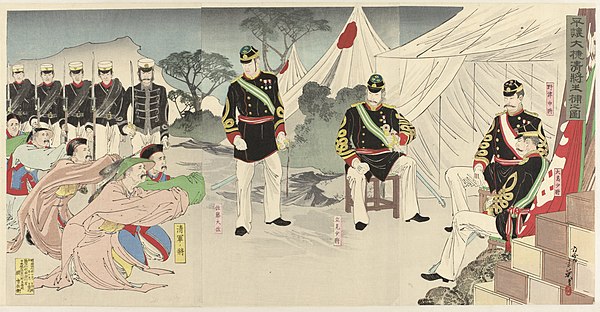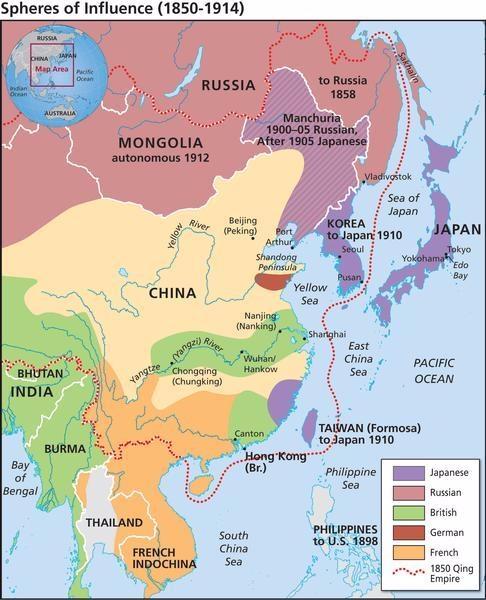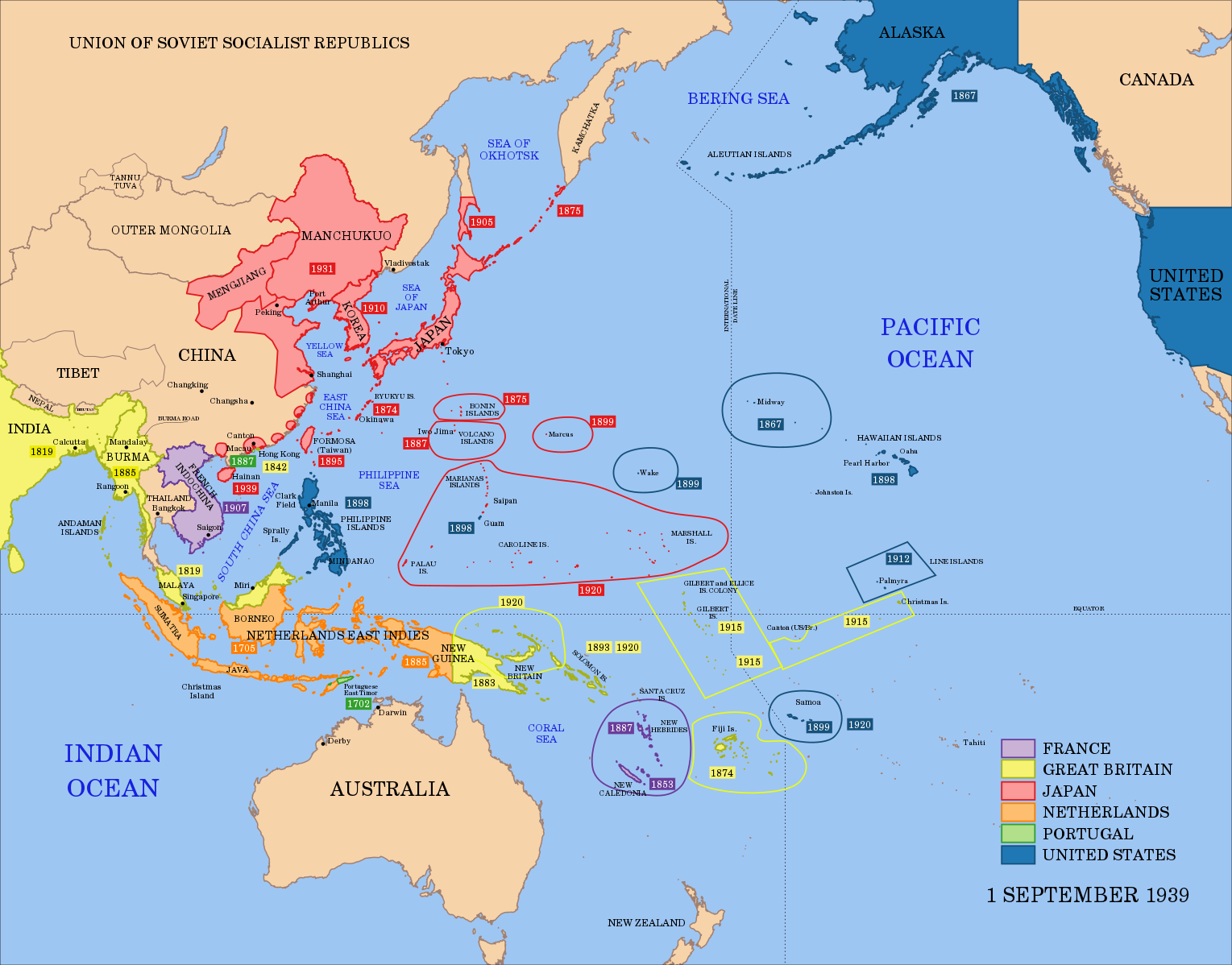Discuss rise of japan as an imperial power
Introduction about history of Japan
Japan, an archipelago located in East Asia, boasts a rich and intricate history that spans thousands of years. From its ancient origins to its modern-day prominence as a global economic powerhouse, Japan’s history is marked by remarkable cultural, political, and social developments.
Ancient Japan was characterized by the emergence of distinct tribal communities and early forms of centralized governance, such as the Yamato clan, which laid the foundation for Japan’s imperial lineage. The introduction of Buddhism from China and Korea during the 6th century brought significant cultural and religious changes, influencing art, architecture, and philosophy.
The medieval period witnessed the rise of powerful feudal lords, known as daimyo, who vied for control over fragmented territories. This era was also marked by the samurai warrior class, embodying principles of honor, loyalty, and martial prowess.
The 17th century saw Japan’s isolation from the outside world under the Tokugawa shogunate, a period known as the Edo period. Despite its isolationist policies, Japan experienced internal stability and cultural flourishing, with the development of Kabuki theater, woodblock printing, and the refinement of traditional arts.
The 19th century brought profound transformations with the Meiji Restoration of 1868, which modernized Japan and established it as a constitutional monarchy. Rapid industrialization, Westernization, and expansionist policies propelled Japan onto the global stage, leading to conflicts such as the Sino-Japanese and Russo-Japanese wars.
The 20th century saw Japan’s ascent as a militaristic power, culminating in its involvement in World War II. Following its defeat, Japan underwent a period of occupation and subsequent reconstruction, leading to an economic miracle that propelled it to become one of the world’s leading economies.
Today, Japan stands as a vibrant blend of tradition and modernity, renowned for its technological innovations, cultural exports, and global influence. Its history serves as a testament to resilience, adaptation, and the enduring spirit of the Japanese people.
Rise of Japan as an imperial power
Question:एक शाही शक्ति के रूप में जापान के उदय पर चर्चा करें
जापान के इतिहास का परिचय
जापान, पूर्वी एशिया में स्थित एक द्वीपसमूह, एक समृद्ध और जटिल इतिहास समेटे हुए है जो हजारों वर्षों तक फैला हुआ है। अपनी प्राचीन उत्पत्ति से लेकर वैश्विक आर्थिक महाशक्ति के रूप में इसकी आधुनिक प्रमुखता तक, जापान का इतिहास उल्लेखनीय सांस्कृतिक, राजनीतिक और सामाजिक विकास से चिह्नित है।
प्राचीन जापान की विशेषता विशिष्ट जनजातीय समुदायों के उद्भव और यमातो कबीले जैसे केंद्रीकृत शासन के शुरुआती रूपों से थी, जिसने जापान के शाही वंश की नींव रखी। छठी शताब्दी के दौरान चीन और कोरिया से बौद्ध धर्म की शुरूआत ने कला, वास्तुकला और दर्शन को प्रभावित करते हुए महत्वपूर्ण सांस्कृतिक और धार्मिक परिवर्तन लाए।
मध्ययुगीन काल में शक्तिशाली सामंती प्रभुओं का उदय हुआ, जिन्हें डेम्यो के नाम से जाना जाता था, जो खंडित क्षेत्रों पर नियंत्रण के लिए प्रतिस्पर्धा करते थे। इस युग को समुराई योद्धा वर्ग द्वारा भी चिह्नित किया गया था, जिसमें सम्मान, वफादारी और मार्शल कौशल के सिद्धांत शामिल थे।
17वीं शताब्दी में टोकुगावा शोगुनेट के तहत जापान बाहरी दुनिया से अलग-थलग पड़ गया, इस अवधि को एडो काल के रूप में जाना जाता है। अपनी अलगाववादी नीतियों के बावजूद, जापान ने काबुकी थिएटर, वुडब्लॉक प्रिंटिंग के विकास और पारंपरिक कलाओं के परिशोधन के साथ आंतरिक स्थिरता और सांस्कृतिक समृद्धि का अनुभव किया।
19वीं सदी 1868 की मीजी बहाली के साथ गहरा परिवर्तन लेकर आई, जिसने जापान का आधुनिकीकरण किया और इसे एक संवैधानिक राजतंत्र के रूप में स्थापित किया। तेजी से औद्योगीकरण, पश्चिमीकरण और विस्तारवादी नीतियों ने जापान को वैश्विक मंच पर धकेल दिया, जिससे चीन-जापानी और रूस-जापानी युद्ध जैसे संघर्ष हुए।
20वीं सदी में जापान का एक सैन्यवादी शक्ति के रूप में उदय हुआ, जिसकी परिणति द्वितीय विश्व युद्ध में उसकी भागीदारी के रूप में हुई। अपनी हार के बाद, जापान को कब्जे और उसके बाद पुनर्निर्माण के दौर से गुजरना पड़ा, जिससे एक आर्थिक चमत्कार हुआ जिसने इसे दुनिया की अग्रणी अर्थव्यवस्थाओं में से एक बनने के लिए प्रेरित किया।
आज, जापान परंपरा और आधुनिकता के जीवंत मिश्रण के रूप में खड़ा है, जो अपने तकनीकी नवाचारों, सांस्कृतिक निर्यात और वैश्विक प्रभाव के लिए प्रसिद्ध है। इसका इतिहास जापानी लोगों के लचीलेपन, अनुकूलन और स्थायी भावना के प्रमाण के रूप में कार्य करता है।
एक शाही शक्ति के रूप में जापान का उदय
एक शाही शक्ति के रूप में जापान का उदय एक जटिल ऐतिहासिक प्रक्रिया है जो कई दशकों तक चली, जिसमें महत्वपूर्ण राजनीतिक, आर्थिक और सैन्य विकास हुए। यहां जापान के शाही विस्तार में योगदान देने वाले प्रमुख कारकों का अवलोकन दिया गया है:
- मीजी रेस्टोरेशन (1868): मीजी रेस्टोरेशन ने जापान के आधुनिकीकरण और एक सामंती समाज से एक केंद्रीकृत राष्ट्र-राज्य में परिवर्तन की शुरुआत को चिह्नित किया। मीजी सरकार ने देश की अर्थव्यवस्था, सैन्य और राजनीतिक संस्थानों को आधुनिक बनाने के उद्देश्य से सुधारों की एक श्रृंखला शुरू की। इस अवधि ने जापान के एक प्रमुख क्षेत्रीय शक्ति के रूप में उभरने की नींव रखी।
- औद्योगीकरण और आधुनिकीकरण: 19वीं सदी के अंत और 20वीं सदी की शुरुआत में जापान के तीव्र औद्योगीकरण ने इसकी आर्थिक वृद्धि और सैन्य क्षमताओं को बढ़ावा दिया। सरकार ने औद्योगिक विकास, बुनियादी ढांचे के विस्तार और तकनीकी उन्नति को बढ़ावा दिया, जिससे जापान वैश्विक मंच पर पश्चिमी शक्तियों के साथ प्रतिस्पर्धा करने में सक्षम हो गया।
- साम्राज्यवाद और विस्तारवाद: पश्चिमी साम्राज्यवादी शक्तियों से प्रेरित होकर, जापान ने एशिया में अपने प्रभाव और क्षेत्र का विस्तार करने की कोशिश की। यह विस्तारवादी एजेंडा संसाधनों, बाज़ारों और रणनीतिक प्रभुत्व की इच्छा से प्रेरित था। साम्राज्यवाद की दिशा में जापान के पहले कदमों में रयूकू साम्राज्य पर कब्ज़ा (1879) और ताइवान (1895) और कोरिया (1910) का अधिग्रहण शामिल था।
- चीन-जापानी युद्ध (1894-1895): चीन-जापानी युद्ध में जापान की जीत ने पूर्वी एशिया में अपना प्रभुत्व स्थापित किया और एक क्षेत्रीय शक्ति के रूप में उसका उदय हुआ। शिमोनोसेकी की संधि ने जापान को ताइवान और लियाओडोंग प्रायद्वीप पर नियंत्रण प्रदान किया, जिससे उसका क्षेत्रीय विस्तार मजबूत हुआ।
- रूस-जापानी युद्ध (1904-1905): रूस-जापानी युद्ध में रूस पर जापान की जीत ने उसकी शाही महत्वाकांक्षाओं को और बढ़ा दिया और उसे पूर्वी एशिया में प्रमुख शक्ति के रूप में स्थापित कर दिया। पोर्ट्समाउथ की संधि (1905) ने कोरिया पर जापान के नियंत्रण की पुष्टि की और उसे मंचूरिया में क्षेत्रीय रियायतें प्रदान कीं।
- प्रथम विश्व युद्ध: मित्र देशों की ओर से प्रथम विश्व युद्ध में जापान की भागीदारी ने उसे प्रशांत क्षेत्र में अपना प्रभाव बढ़ाने और मारियाना, कैरोलीन और मार्शल द्वीपों सहित पूर्वी एशिया में जर्मन क्षेत्रों पर कब्जा करने की अनुमति दी।
- अंतरयुद्ध काल: अंतरयुद्ध काल के दौरान, जापान को आर्थिक चुनौतियों और राजनीतिक अस्थिरता का सामना करना पड़ा लेकिन उसने अपनी साम्राज्यवादी नीतियों को जारी रखा। 1931 में मंचूरिया पर आक्रमण और उसके बाद चीन में आक्रामकता के कारण अंतर्राष्ट्रीय निंदा हुई लेकिन जापान की क्षेत्रीय पकड़ का भी विस्तार हुआ।
- द्वितीय विश्व युद्ध: जापान के आक्रामक विस्तारवाद की परिणति द्वितीय विश्व युद्ध में उसकी भागीदारी के साथ हुई, जहां उसने अपने नियंत्रण में एक ग्रेटर ईस्ट एशिया सह-समृद्धि क्षेत्र स्थापित करने की मांग की। हालाँकि, 1945 में जापान की हार और उसके बाद मित्र देशों की सेनाओं के कब्जे ने उसकी शाही महत्वाकांक्षाओं का अंत कर दिया।
संक्षेप में, एक शाही शक्ति के रूप में जापान का उदय औद्योगीकरण, सैन्यीकरण और विस्तारवादी नीतियों सहित कारकों के संयोजन से प्रेरित था। हालाँकि, इसकी शाही महत्वाकांक्षाएँ अंततः संघर्ष और अंततः हार का कारण बनीं, जिसने युद्ध के बाद के युग में जापानी इतिहास के पाठ्यक्रम को नया आकार दिया।
दो विश्व युद्धों के बीच जापानी साम्राज्यवाद का उदय
दो विश्व युद्धों के बीच, जापान ने आक्रामक विदेशी नीतियों और सैन्य कार्रवाइयों द्वारा चिह्नित अपनी शाही महत्वाकांक्षाओं का एक महत्वपूर्ण विस्तार अनुभव किया। इस अवधि के दौरान जापानी साम्राज्यवाद के उदय का पता लगाने वाली एक समयरेखा यहां दी गई है:
- मंचूरियन हादसा (1931): सितंबर 1931 में, जापानी क्वांटुंग सेना ने, जापानी सरकार से अनुमति के बिना, क्षेत्र पर आक्रमण करने और कब्जा करने के बहाने, मंचूरिया (उत्तरपूर्वी चीन) में एक झूठा झंडा अभियान, मुक्देन घटना का मंचन किया। इस घटना के कारण जापानी नियंत्रण के तहत मांचुकुओ के कठपुतली राज्य की स्थापना हुई।
- चीन में जापानी विस्तार: मंचूरियन घटना के बाद जापान ने चीन में अपना विस्तारवादी एजेंडा जारी रखा। इसकी परिणति 1937 में चीन पर पूर्ण पैमाने पर आक्रमण के रूप में हुई, जो दूसरे चीन-जापानी युद्ध की शुरुआत थी। जापानी सेनाओं ने नानजिंग नरसंहार जैसे क्रूर अभियान चलाए और चीनी क्षेत्र के बड़े हिस्से पर कब्जा कर लिया।
- स्टिम्सन सिद्धांत और अंतर्राष्ट्रीय निंदा: अंतर्राष्ट्रीय समुदाय, विशेष रूप से संयुक्त राज्य अमेरिका ने चीन में जापान के कार्यों की निंदा की। 1932 में, स्टिम्सन सिद्धांत ने मंचूरिया में जापान की आक्रामकता के परिणामस्वरूप क्षेत्रीय परिवर्तनों को गैर-मान्यता देने की घोषणा की। हालाँकि, जापान के विस्तार को रोकने में अंतर्राष्ट्रीय प्रतिक्रियाएँ काफी हद तक अप्रभावी रहीं।
- त्रिपक्षीय संधि (1940): सितंबर 1940 में, जापान ने धुरी शक्तियों का गठन करते हुए जर्मनी और इटली के साथ त्रिपक्षीय संधि पर हस्ताक्षर किए। इस गठबंधन ने यूरोप में फासीवादी शासन के साथ जापान के जुड़ाव का संकेत दिया और इसकी आक्रामक विदेश नीतियों को और बढ़ावा दिया।
- फ़्रेंच इंडोचाइना पर कब्ज़ा (1940): जुलाई 1940 में, फ़्रांस के नाज़ी जर्मनी के हाथों पराजित होने के बाद जापान ने फ़्रेंच इंडोचाइना (वियतनाम, लाओस और कंबोडिया) पर कब्ज़ा कर लिया। इस कदम का उद्देश्य दक्षिण पूर्व एशिया में रणनीतिक संसाधनों तक पहुंच सुरक्षित करना था और इस क्षेत्र में ब्रिटिश और डच उपनिवेशों के लिए सीधा खतरा पैदा करना था।
- द्वितीय विश्व युद्ध की ओर बढ़ना: एशिया में जापान के निरंतर विस्तार और उसके बढ़ते सैन्यीकरण ने संयुक्त राज्य अमेरिका और अन्य पश्चिमी शक्तियों के साथ तनाव बढ़ा दिया। इन तनावों की परिणति 7 दिसंबर, 1941 को पर्ल हार्बर पर हमले के रूप में हुई, जिसने संयुक्त राज्य अमेरिका को द्वितीय विश्व युद्ध में डाल दिया।
- प्रशांत युद्ध: जापान की शाही महत्वाकांक्षाओं के कारण अंततः उसे द्वितीय विश्व युद्ध के प्रशांत रंगमंच में शामिल होना पड़ा। इस संघर्ष के परिणामस्वरूप पूरे एशिया-प्रशांत क्षेत्र में बड़े पैमाने पर तबाही हुई और जानमाल की हानि हुई।
संक्षेप में, दो विश्व युद्धों के बीच, जापान ने पूर्वी एशिया में विस्तारवाद की आक्रामक नीति अपनाई, जिसका लक्ष्य इस क्षेत्र पर प्रभुत्व स्थापित करना और महत्वपूर्ण संसाधनों तक पहुंच सुरक्षित करना था। इन कार्रवाइयों ने अंततः द्वितीय विश्व युद्ध के फैलने में योगदान दिया और 20वीं सदी के इतिहास की दिशा को आकार दिया।
Multiple Choice Questions
1.What event marked Japan’s unauthorized invasion of Manchuria in 1931?
A) The Nanjing Massacre
B) The Mukden Incident
C) The Battle of Midway
D) The Treaty of Portsmouth
Answer: B) The Mukden Incident
2.Which pact did Japan sign in 1940, aligning with Germany and Italy?
A) Munich Agreement
B) Kellogg-Briand Pact
C) Tripartite Pact
D) Treaty of Versailles
Answer: C) Tripartite Pact
3.What was the primary reason for Japan’s occupation of French Indochina in 1940?
A) To secure access to strategic resources
B) To establish a puppet state
C) To counter British colonial influence
D) To support anti-colonial movements
Answer: A) To secure access to strategic resources
4.Which doctrine declared non-recognition of territorial changes resulting from Japan’s aggression in Manchuria?
A) Stimson Doctrine
B) Monroe Doctrine
C) Truman Doctrine
D) Marshall Doctrine
Answer: A) Stimson Doctrine
5.What event brought the United States into World War II?
A) The attack on Pearl Harbor
B) The invasion of Normandy
C) The Battle of Stalingrad
D) The bombing of Hiroshima
Answer: A) The attack on Pearl Harbor
6.Which war marked the beginning of Japan’s full-scale invasion of China in 1937?
A) Russo-Japanese War
B) First Sino-Japanese War
C) Second Sino-Japanese War
D) Korean War
Answer: C) Second Sino-Japanese War
7.What was the puppet state established by Japan in Manchuria?
A) Manchukuo
B) Formosa
C) Ryukyu Kingdom
D) Xinjiang
Answer: A) Manchukuo
8.What international alliance did Japan form in 1940?
A) Allied Powers
B) Axis Powers
C) League of Nations
D) Non-Aligned Movement
Answer: B) Axis Powers
9.Which country did Japan invade in 1931 under the pretext of the Mukden Incident?
A) China
B) Korea
C) Manchuria
D) Vietnam
Answer: C) Manchuria
10.What was the strategic goal behind Japan’s occupation of French Indochina in 1940?
A) To establish a buffer zone against China
B) To gain access to oil and rubber resources
C) To counter British colonial expansion
D) To support nationalist movements in the region
Answer: B) To gain access to oil and rubber resources




